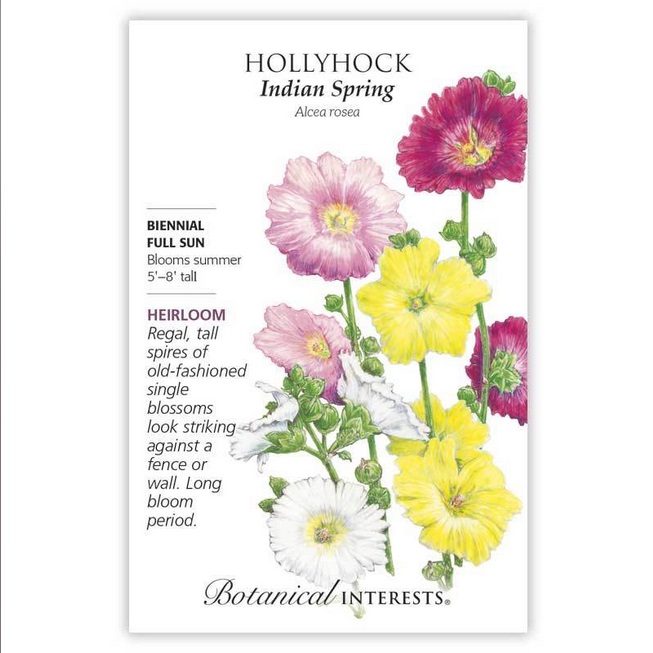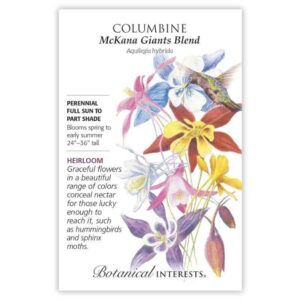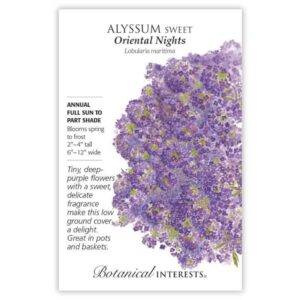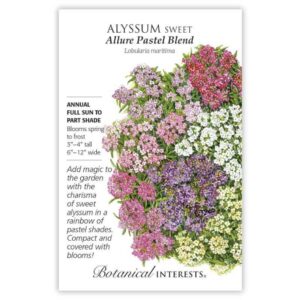Description
Botanical Interests' Indian Spring Hollyhock Seeds (Alcea rosea) bring the charm of an old-fashioned garden to life with their vibrant yellow, rose, pink, and white 2″–4″ flowers. This biennial variety is known for flowering in its first season from seed, and despite its drought tolerance, it thrives best with ample moisture and rich soil. A 1939 All-America Selections winner, 'Indian Spring' reaches a height of 5'–8' and attracts pollinators while adding color to summer gardens. With edible blooms, the large petals are perfect for garnishing salads and desserts, while the flowers' simple beauty also evokes nostalgia for English gardens of the early 1800s.
50 seeds.
Variety Info:
Botanical Name: Alcea rosea
Family: Malvaceae
Native: Origin unknown
Hardiness: Biennial, hardy in USDA zones 2–8
Plant Dimensions: 5'–8' tall. 12″ wide
Variety Information: 2″–4″ yellow, rose, pink and white flowers
Exposure: Full sun
Bloom Period: Summer
Attributes: Attracts Pollinators, Drought Tolerant, Edible Flower
Sowing Info:
When to Sow Outside: RECOMMENDED. 1 to 2 weeks after your average last frost date, or 2 months before your average first fall frost date.
When to Start Inside: 6 to 8 weeks before your average last frost date. Roots are sensitive to disturbance; sow in biodegradable pots that can be planted in the ground.
Days to Emerge: 10–14 days
Seed Depth: Press into surface
Seed Spacing: A group of 3 seeds every 24″–36″
Thinning: When 3″ tall, thin to 1 every 24″–36″
Growing Info:
Harvesting: For longest-lasting cut flowers, harvest when 1/3 of the flowers on the stem have opened. Harvest in the morning; cut stem at an angle and immediately place in a bucket of warm water. Before placing in a vase, dip the stem end in boiling water for a minute, or sear it over a flame for 20 seconds; this will stop the flow of the milky sap so it does not clog the stem.




